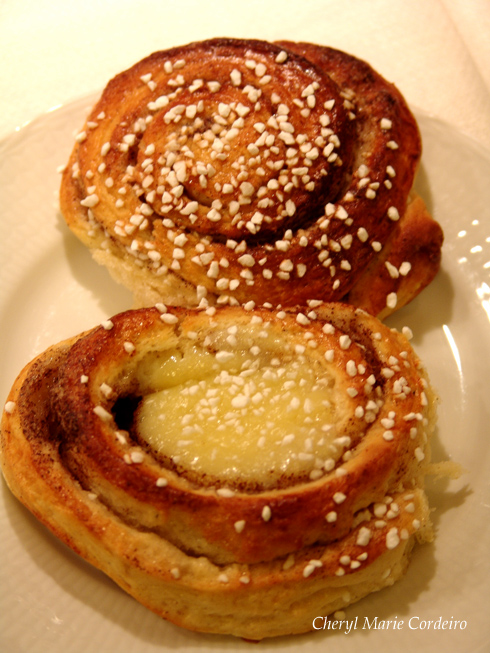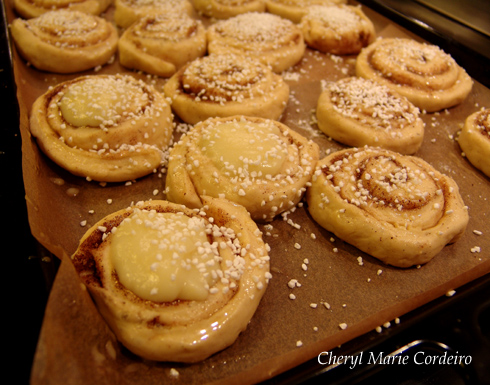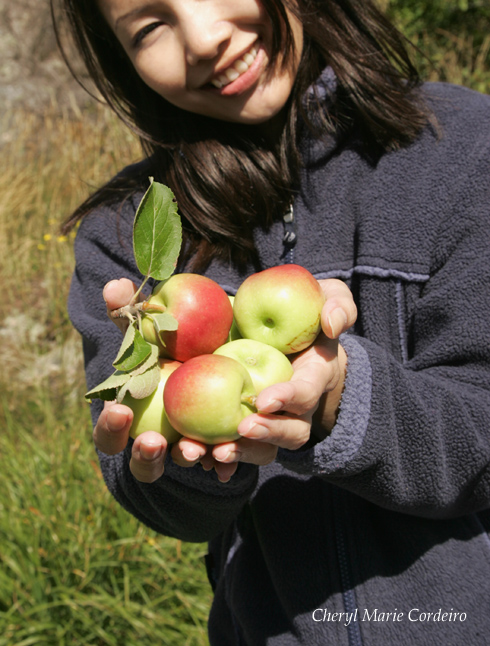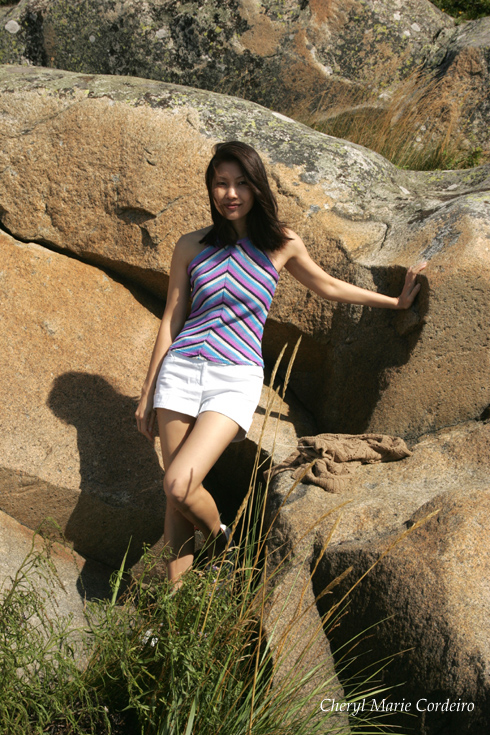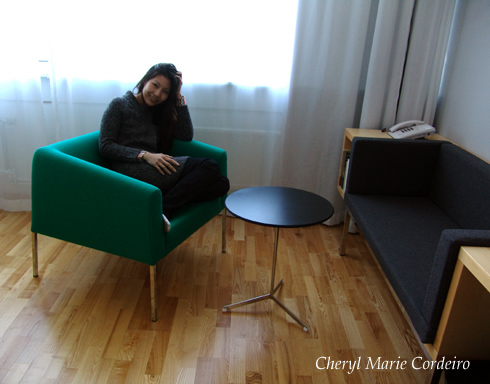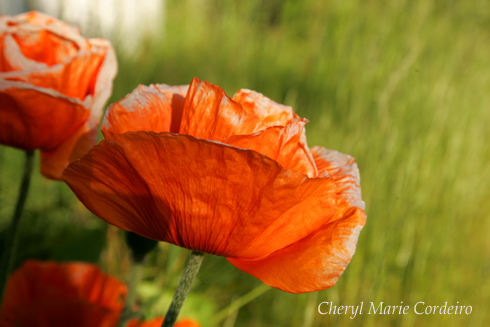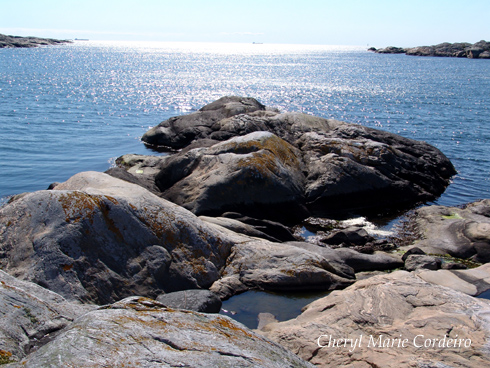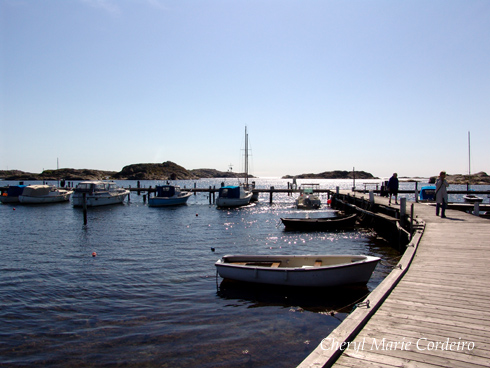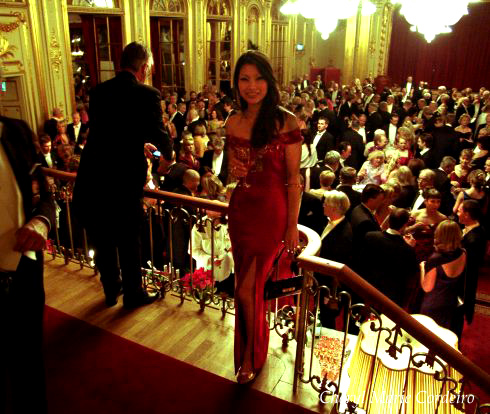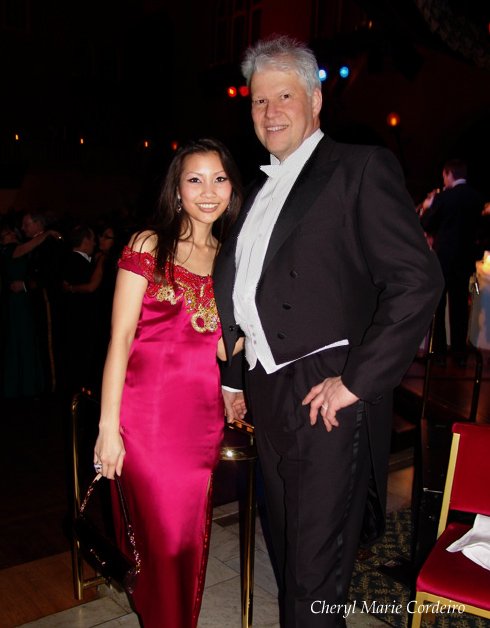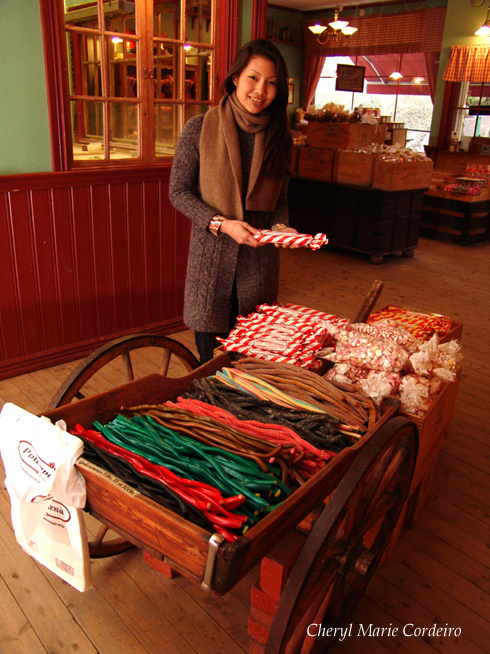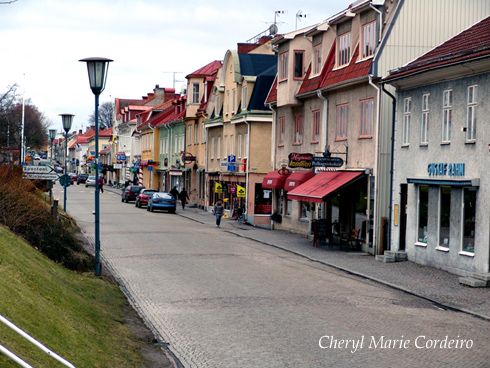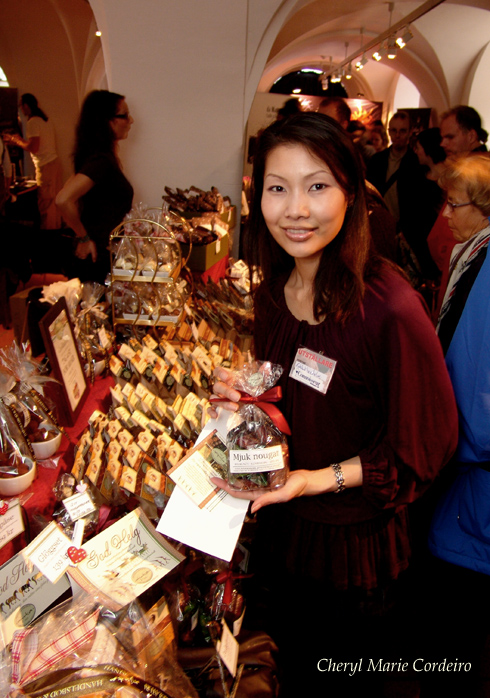
At the chocolate fair, with some of the best nougat in hand.
Photo for CMC © Jan-Erik Nilsson, Cheryl Marie Cordeiro-Nilsson 2009
If there was anything that could make me get out of bed early on a rainy Saturday morning, this would be it – Gothenburg’s Chocolate and Délicatesse Festival 2009!
It was not just the thought of free chocolate samples at this event that spurred me into action on this soggy morning, but of living and breathing the life and sharing the space of chocolate connoisseurs, even for a few hours, made my day.
Upon arrival at the Göteborgs City Museum, where the event was held, I realized that Swedes loved their chocolates. Almost half of the city of Gothenburg thought the same as I – to get in first – where not even wind and rain would keep them away from this divine manna. The queue to the entrance ran almost 200m, right past Tyska Kyrkan, the German Church that stood beside this museum, touching the tip of Gustaf Adolfs Torg along Norra Hamngatan.
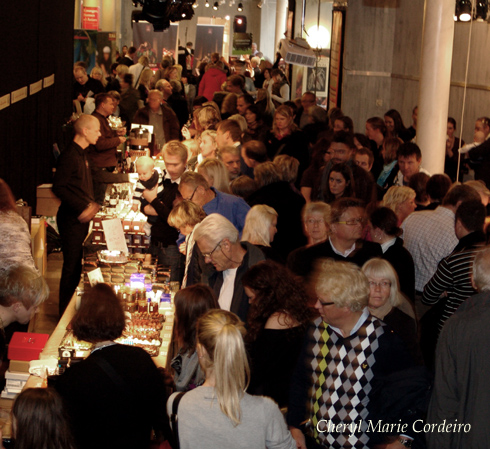
The crowd.
The event hall that spanned one and a half floors of the museum, seemed stiflingly inadequate and compact for this event. Cold and near freezing outdoors, the crowd turned warm very quickly when indoors. Still, having grown up tropical, I was surprised to see some people literally turning to ice-cream eating to keep cool, the queue to the lone ice-cream vendor rivaling the queues of the more attractive chocolate stalls.
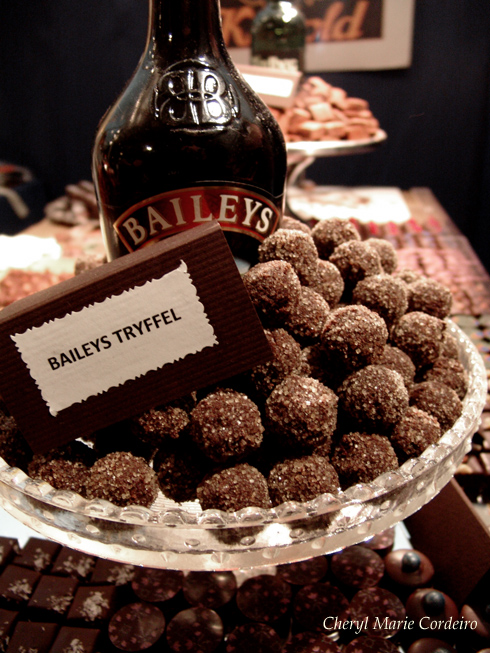
Truffles in all forms imaginable. Anyone for a Bailey’s?
at Jeanna Kanold who together with her four daughters are Flickorna Kanold (The Kanold Girls)
The most spectacular view at the event was the vast exhibit of chocolate truffles. The stalls had bite-sized morsels so colourful, the candied sight simply took your breath away! I found myself standing in front of Kanolds for example, just absorbing the artistry of work, and whatever fillings of the truffle seemed secondary; after all, truffles have been around since 1895 (created by M. Dufour in France) and are more or less made with a ganache center coated in chocolate or cocoa powder that is usually spherical, conical, square or curved shape. But soon, the taste test came along and the perspective is shifted when you begin to decide which of these precious heaven-filled small packages you’d like to bring home, the ones with cream, caramel, nuts, berries, nougat, fudge, toffee, mint, liquor etc. The choice to make was mind-boggling!
Continue reading “Gothenburg’s Chocolate and Délicatesse Festival, 2009”

